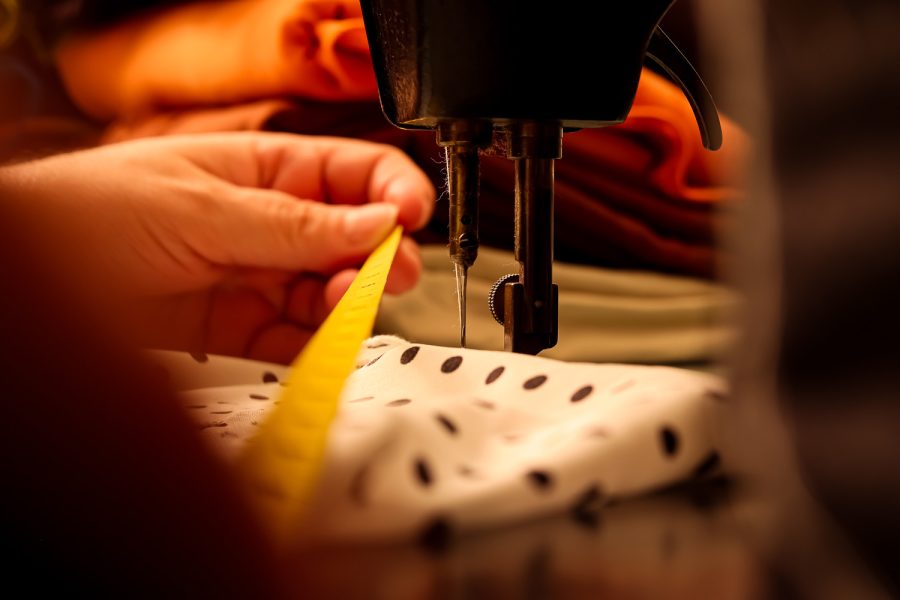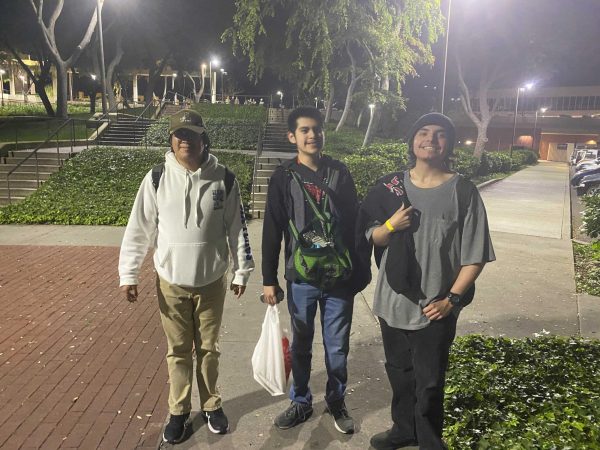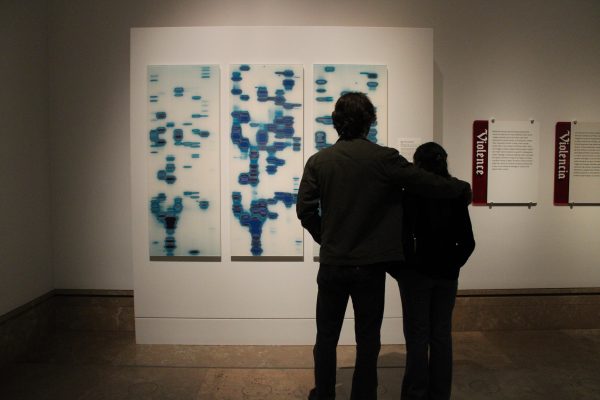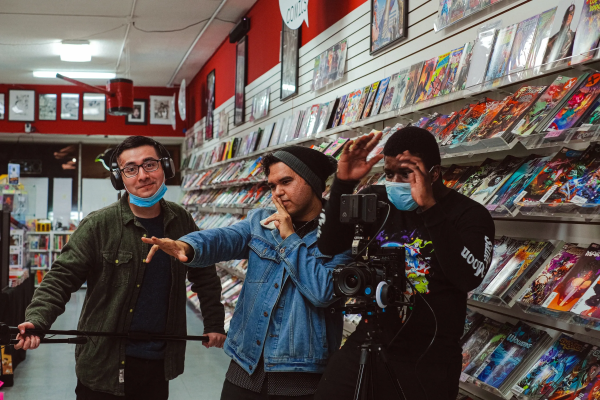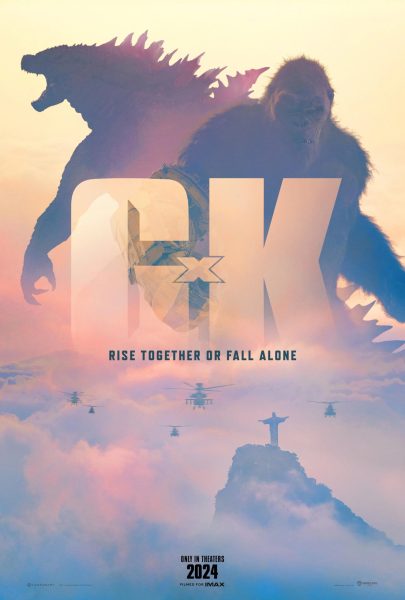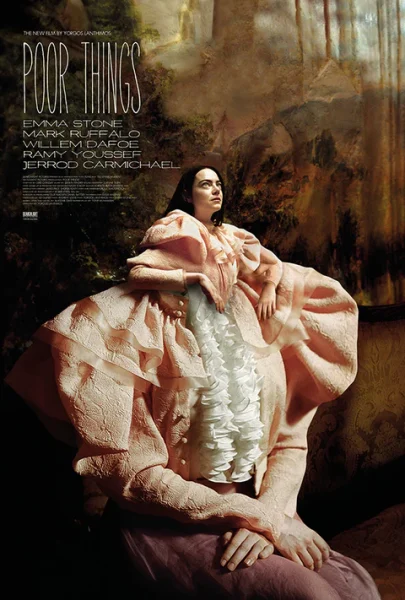Always on trend: An inside look into CSUN’s fashion department
Photo illustration of hands measuring fabric on an industrial sewing machine, taken in Los Angeles, Calif. on Thursday, Oct.7, 2021.
October 22, 2021
Taught under the Department of Family and Consumer Sciences, the apparel design and production program teaches a diversity of skills to students interested in fashion.
Other than learning how to sketch, sew, design and style, undergraduate CSUN students can learn about the facets of the fashion industry and how to become a successful fashion designer and merchandiser.
Jongeun Kim has been teaching in the apparel design and merchandising program at CSUN for about 15 years as well as classes on production, human behavior, design-smart fashion and e-commerce marketing.
“Fashion is always on trend, it’s a lifetime job,” Kim said. “You are working, but that’s what you’re enjoying.”
The Department of Family and Consumer Sciences offers undergraduate degree programs in fashion such as apparel design and production, apparel merchandising, or textile and apparel.
Each program has its own speciality, from which students can choose from. The textile and apparel program generally focuses on fibers, fabrics, manufacturing various materials and the fashion market.
Kim recommends undergraduate students in the program to familiarize themselves with Adobe and Microsoft Excel.
Apparel design and production is a more hands-on program, where students can learn the creative process of designing. What differentiates this from other programs is that a portfolio isn’t required to apply.
Rochelle Mendez, a graduate student at CSUN, completed her undergraduate degree in the apparel design and merchandising program. Mendez said she applied for the program because it didn’t just focus on garment construction, it also offered classes on costume history, textiles and apparel psychology, which she hadn’t considered before.
Mendez stated she is glad the program does not require a portfolio to enroll because many new incoming students — herself included at the time — don’t have any completed works, experience, or accomplishments yet.
Students applying for the program can benefit from not submitting a portfolio since first year students are at the introductory level of the program. Mendez said not requiring the portfolio would prevent many students from getting accepted.
“While a portfolio is meant to measure what level of expertise an individual is at, the [Apparel Design and Merchandising] program here at CSUN is much more concerned with ensuring that everyone has a solid grasp of fundamental concepts and an overall basic skill set that can be continuously built upon,” Mendez said.
Through the program, she gained knowledge on fabrics, designing, technology and the importance of fashion trends. She began learning the fundamentals of fashion designing and learned how to hand sew, then moved to pattern drafting and draping.
Every spring semester, seniors can showcase their work at the Trends Fashion Show. Student designers work on their collections for the fashion show during the spring semester.
The Trends Fashion Show helps student designers present their collection, which exposes students to other developed fashion designers who attend the show. The first-prize winner gets the opportunity to display their collection at the Bloomingdale’s department store in Sherman Oaks.
Mendez has designed many items in her undergraduate years. She created a menswear look for the annual Trends Fashion Show, which featured fitted trousers, a long jacket suit made of black poplin and a white lace applique.
“I was a complete novice before joining the program,” Mendez said. “So everything I know and all the skills I have is because of it.”
Mendez created a three-piece look for the 2020 Trends Fashion Show, which was canceled due to the pandemic. The first item was a turquoise mid-thigh short and halter top combo, which used 3D scale polyester and satin material. The second was a pink asymmetrical skirt and a boat-neck, sleeveless top with a back opening made out of satin and fringe mesh fabric, and the third was a yellow deep collar, long jacket with sheer mesh pants.
She also made a “strapless A-line dress out of plastic with blue origami butterflies placed between the garment’s facing” for her senior project.
Mendez is currently designing a five piece look and 10-conversion collection.
“I would also encourage anyone wanting to develop a super important lifelong skill like sewing to check it out or maybe even anyone looking for fun, creative, and hands-on courses to take as an elective,” Mendez said. “The faculty is amazing, the class sizes are relatively small, so the instruction is often pretty individualized, and the content is just so interesting.”
This year’s seniors are developing a project called “Avant-garde,” which is an opportunity for students to create a collection of their choosing and showcase it to the public.
“Getting to see your vision and hard work come to life was so rewarding, euphoric, and encouraging. It made me feel like a real fashion designer,” Mendez said.
